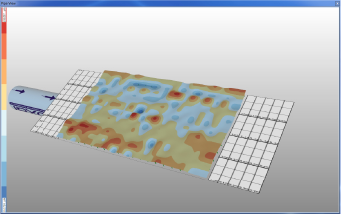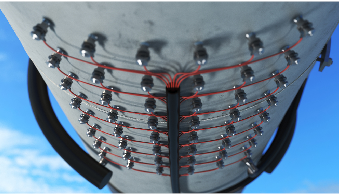ETC The Growing Role of Digitalization in Pipeline Integrity Management
페이지 정보
작성자 최고관리자 댓글 0건 조회 2,385회 작성일 19-10-30 15:30본문
When it comes to the safe transportation of gases and the integrity of pipelines, the ability to operate such infrastructure in a safe and reliable manner is vital.
Yet, pipelines today consist of vast and complex networks, delivering from remote locations to gas processing facilities and petrochemical manufacturers. The number of pipelines in remote areas is also adding to the challenge, with 2,175,000 miles of pipelines in 120 countries around the world and – according to Pipeline & Gas Journal’s 2017 Worldwide Pipeline Construction Report – 83,000 miles of new pipelines planned.
Against this industry context, this article will look at pipeline integrity management – in particular relating to the threat of internal corrosion – and the growing role of digitalization.

Current Integrity Threats
Pipeline operators in the United States are required to abide by regulations from the Pipeline and Hazardous Materials Safety Administration(PHMSA) and two widely accepted standards: ASME B31.8S and ASME 2012c.
These standards identify three key threats to pipeline integrity: i) stable, resident threats – threats that don’t change over time, tend to be influenced by another condition or failure mechanism, and cover areas such as manufacturing and construction; ii) threats that are time-independent and could be down to human error or outside factors, such as weather: and iii) time-dependent threats – threats that grow over time and include external corrosion, stress corrosion cracking, and internal corrosion.
In a recent 2016 National Association of Corrosion Engineers(NACE) Impact study , the global cost of corrosion was estimated at US$2.5 trillion. According to PHMSA, corrosion were responsible for 18% of significant pipeline safety incidents (both onshore and offshore) in the 20-year period from 1988 through 2008, with 40 to 65 significant corrosion incidents per year .
The same issues can also be seen in Canada where the Alberta Energy Regulator(AER) and their 2018 Pipeline Performance Report , found internal corrosion to be the leading cause of pipeline failures representing 37% of such failures in 2017 and 92% of high-consequence incidents occurring on pipelines that carry corrosive substances, such as salt water or oil well effluent.

Traditional Integrity Assessment Methods
So how are operators addressing internal corrosion?
Traditional means of combatting corrosion include Pipeline Integrity Management(PIM) frameworks that consist of process-oriented, performance-based programs and start with hazard identification and hazard and operability analysis(HAZOP) – qualitative methods that examine the pipeline for possible hazards.
Building on these are a number of integrity assessment methods that include In-Line Inspection(ILI) and Direct Assessment.
In-Line Inspection(ILI) covers a wide variety of tools and techniques, such as ultrasonic inspection, magnetic flux inspection, metal loss tools and pigging. While effective, ILI, however, comes with challenges, such as the need to have pipelines configured and specification requirements.
There are operational and cost issues, such as pipeline shutdowns and extensive planning and execution requirements, and the fact that pigs can only handle a few miles on average, require multiple launches, and can be as much as US$35,000 per mile!
Direct Assessment consists of External Corrosion Direct Assessment(ECDA), Internal Corrosion Direct Assessment(ICDA) and Stress Corrosion Direct Assessment(SCCDA). Direct Assessment has limitations as well, however, such as short pipeline sub-segments coverage and the fact that data from a few select locations along the pipeline is used to characterize the integrity of the entire pipeline. In addition, there are hydrostatic pressure tests(HPT) - whose measurement interval can range from months to years and provide only isolated snapshots throughout the pipeline’s lifetime.
Furthermore, despite the time-dependent nature of corrosion, current threat assessment methods fail to track corrosion on a continuous basis. Ageing supervisory control and data acquisition(SCADA) systems and the diverse nature of pipeline asset and integrity data and the various ways of gathering and reporting it can make the process of transforming data into actionable information extremely difficult. For instance, a field report of a leak may give its location using GPS co-ordinates, while an inline inspection(ILI) may provide a different location of pipe wall corrosion using an odometer reading.
Likewise, different data is often located in several parts of an organization with the corrosion engineer needing to bring these data together to perform the risk assessment and yield the proper integrity management recommendations and conclusions.
It’s against this backdrop that there is a growing move towards digitalization in fighting internal corrosion. Improvements in operational performance will require better data integration, more sophisticated data analysis, and better ways to visualize information. The rest of this article will examine how this is being achieved.

The Growth in Digitalization in Pipeline Integrity Management
Digitalization is becoming more and more prevalent in the pipeline sector today, with companies embracing digital transformation as a crucial component of pipeline management tools for monitoring, predicting, and planning for the future.
Take the growth in real-time sensors.
In-line sensors, such as Electrical Resistance(ER) probes, electrochemical probes and corrosion coupons, play a key role – alongside other technologies – in providing real-time corrosion data.
Probes provide the highest sensitivity and fastest responses to changing corrosion rates and are most commonly used for uniform corrosion measurement or detection of changed fluid corrosivity. As an example, a 20 mil element probe can detect a corrosion rate of 5 mpy (defined by NACE International as moderate/severe) within hours and less than a day, depending on measurement frequency. The high sensitivity and the digital technologies around them makes probes valuable for the fast-track monitoring of process changes and for tuning processes, such as corrosion inhibitors.
The use of advanced analytics around the data that probes generate can also uncover patterns not revealed by conventional analytics, and assist in making more effective predictions.
When it comes to non-intrusive measures, options include wall thickness monitoring via ultrasonic(UT) measurements. Installing UT sensors permanently on the pipe(clamped or stud-welded to any pipe section or asset) provide real-time regular measurements on the spot, providing increased stability and sensitivity. Real-life sensitivity for UT measurements is typically 10-20 micrometers for changes in wall thickness and is also possible from the form of the wave signal to determine surface conditions inside the pipe. Again, advanced data analytics can help detect the weak points of a system.
One of the most significant corrosion monitoring technology when it comes to the growing digitalization of pipeline integrity management today, is the Field Signature Method(FSM). FSM is based on feeding an electric current through a monitored section of a pipe, pipeline or vessel. The applied current sets up an electric field that is monitored as voltage drop values between a set of sensing pins installed on the external pipe wall.
The initial measurement sequence measures the voltage drop between all pairs of sensing pins and is called the Field Signature. Later measurements are compared to the Field Signature, where general corrosion can be seen as a uniform increase in voltage drops between all pin pairs, and localized corrosion can be seen as a local increase in the values.
FSM data can then be plotted as metal loss versus time for the efficient tracking of changes in metal loss or in 3D plots that show the distribution of corrosion over the monitored area. Typical sensitivity for FSM is 0.1% of wall thickness for general corrosion, corresponding to 10-20 micrometer in most cases.
While a technology that has been available for up to two decades, FSM is seeing greater digatalization. Emerson, for example, has developed the Roxar FSM Log 48 Area Corrosion Monitor™, a new pipeline integrity management tool that delivers permanent, cost-effective and online area corrosion & erosion monitoring for remote and large area pipelines.
The monitor, which consist of 48 pins in the sensing pin matrix, is a variant of the already established potential drop technique and monitors a pre-defined area with the ability through the sensing pins to distinguish between localized corrosion and generalized corrosion.
Inorganic acids, salts, CO2, H2S and other components that generate localized corrosion and that can only be monitored through area measurement technologies can also be tracked in real-time. To this end, the Roxar FSM Log 48 provides a tomographic image that depicts a full insight of the pipeline’s internal corrosion status, leveraging the digital advances in the industry.
The monitor can also be easily retrofitted to any uncovered or buried onshore pipeline segment and due to its cellular communication and solar power capabilities, can autonomously function in the most remote locations, enabling more data points across several pipeline segments. The fact that several can be located over a pipeline minimizes the need of assessing the pipeline integrity through pigging, and increases transportation capacity.
As part of integrated digital pipeline integrity management, Emerson has also developed a data management solution that can interface with SCADA systems through Modbus TCP/IP, providing advanced data trending capabilities, alarm setting, and information sharing options. It is this information sharing that can increase pipeline integrity and also optimize pig runs (when pipe bends, valve restrictions and contaminant build-up are restricting pigs from moving through pipelines), integrity digs and hydrostatic pressure tests.
This continuous digital monitoring of general and localized internal corrosion allows early threat identification and improved risk assessment, and avoids unnecessary pipeline shutdowns, costly hydrostatic pressure tests, and repairs due to leaks. The new FSM Monitor also forms an important part of future digitization strategies and can become a key element of an Industrial Internet of Things(IIoT) network of intelligent devices – continuously transmitting actionable information for robust decision making.
Conclusions
There is no doubt that widespread digitalization still has a way to go - 70 percent of pipeline leaks are still identified only by visual inspection, for example.
■ Contact: www.emerson.kr
- 이전글디지털화를 통하여 파이프라인 무결성 관리 19.10.30
- 다음글One Sea works for safe and ethical autonomous shipping 19.10.30












